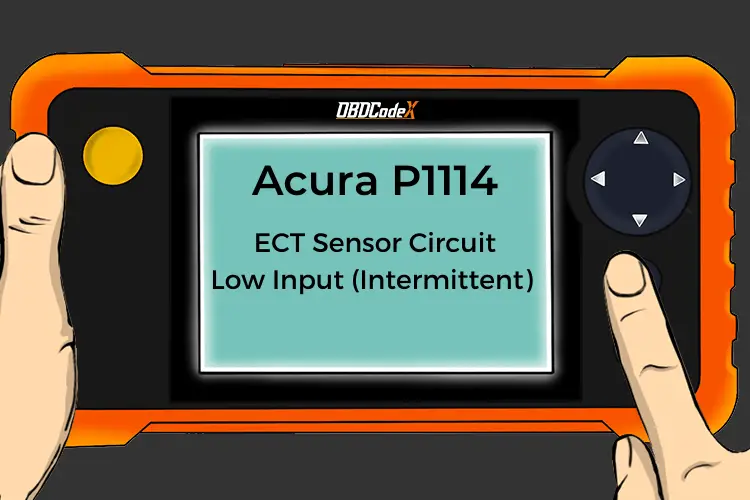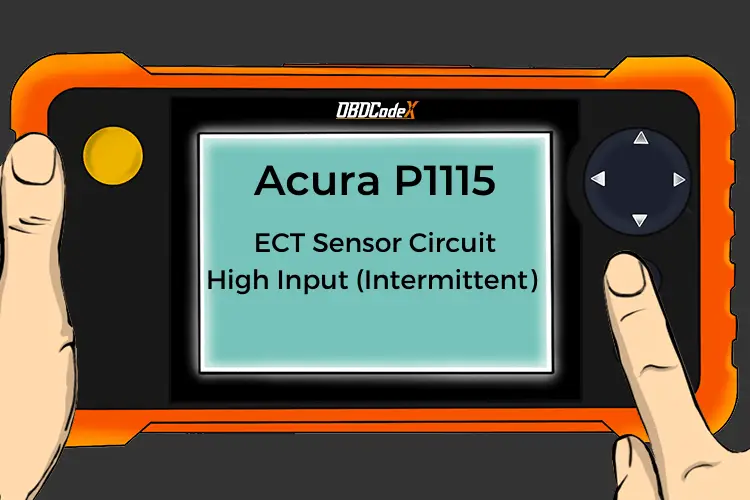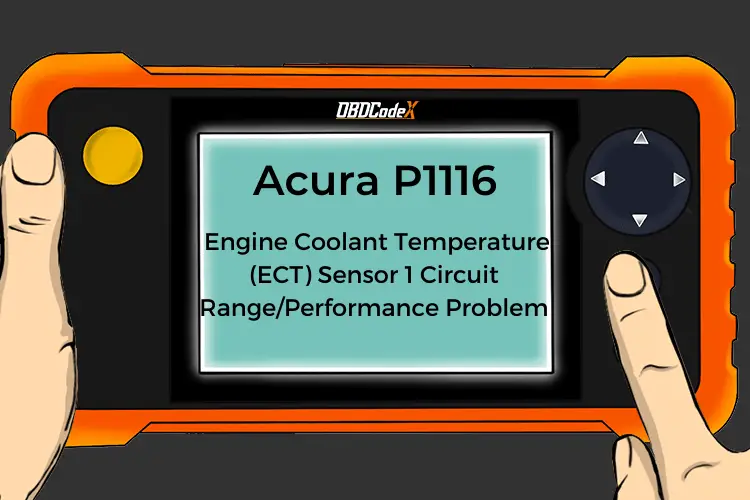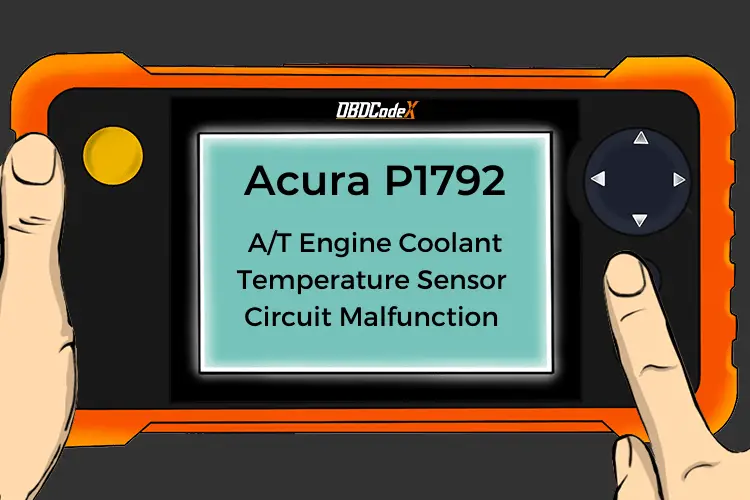P050C: Cold Start Engine Coolant Temperature Performance
Is your scanner showing P050C?
No worries. We'll show you what it means and how to deal with it.
P050C: Cold Start Engine Coolant Temperature Performance
OVERVIEWWhat Does The P050C Code Mean?
A stored a code P050C, means that the powertrain control module (PCM) has detected a problem with engine coolant temperature performance. Cold start is a term used to describe an engine drivability strategy that is implemented only when the engine is at (or below) ambient temperature.
Engine coolant temperature is monitored by the PCM using one or more engine coolant temperature sensors (ECT). The ECT sensor consists of a brass (or plastic) housing with a thermal resistor inside.
The housing is designed so that it may be threaded into the engine block, cylinder head, or intake manifold; where the engine cooling passages are located. When the thermostat opens, coolant flows across the tip of the ECT sensor (where the thermal resistor is).
The ECT sensor is provided a reference voltage and a ground but the sensor completes the circuit. As engine coolant temperature increases, the resistance of the thermal resistor decreases. The result of this decrease in circuit resistance is higher voltage being input to the PCM.
When engine coolant temperature decreases, a reverse action occurs and circuit voltage decreases. The PCM receives these variations in circuit voltage as changes in engine coolant temperature.
Some vehicle applications utilize multiple ECT sensors. A common location for a secondary ECT sensor is in one of the radiator tanks. The PCM compares input signals between ECT sensors to determine whether or not engine coolant is flowing efficiently.
In most cases, engine coolant temperature is also compared to ambient temperature under cold start conditions. The ambient temperature sensor functions in a similar manner to the ECT sensor and is normally located near the grille.
If the PCM detects a discrepancy between the ECT sensors and/or the ambient temperature sensor that exceeds the maximum threshold, under cold start conditions, a code P050C will be stored and a malfunction indicator lamp (MIL) may be illuminated. Multiple ignition cycles (with a failure) may be required for MIL illumination.
What Are The Symptoms Of The P050C Code?
Symptoms of a P050C engine code may include:
- Rich exhaust
- Cold start drivability issues
- No heat inside the passenger compartment
- ECT sensor related codes
What Are The Potential Causes Of The P050C Code?
Causes for this code may include:
- Defective primary or secondary ECT sensor
- Faulty ambient temperature sensor
- Shorted or open circuits or connectors
- Bad thermostat
- Low engine coolant
How Serious Is This P050C Code?
A lack of engine coolant efficiency may result in poor drivability under cold start conditions, diminished fuel efficiency, and poor heater output. A code P050C should be considered severe and rectified at your earliest convenience.
How Can You Fix The P050C Code?
Diagnose and repair ECT related codes before attempting to diagnose the P050C.
Begin by making sure that the engine is full of coolant and not overheating. If it is full of coolant and not overheating, a visual inspection of ECT sensor system wiring and connectors would be my next concern.
When diagnosing a code P050C, I would gain access to a source of reliable vehicle information, an infrared thermometer with a laser pointer, a diagnostic scanner, and a digital volt/ohmmeter (DVOM).
You will need diagnostic flow charts, wiring diagrams, connector face views, connector pin-out charts, and component testing procedures and specifications to accurately diagnose a code P050C. This information can be found in your source of vehicle information.
Connect the scanner to the vehicle diagnostic port. Retrieve all stored codes and freeze frame data and write it down in a safe place. It may be helpful as you delve deeper into the diagnostic process. Clear the codes and test-drive the vehicle to see if the code is reset.
If the P050F is immediately reset, turn the key on with the engine off (KOEO) and reconnect the scanner. Use the infrared thermometer to check actual coolant temp at the appropriate spot near the ECT sensors. Observe ECT data on the scanner and see if include only pertinent items for faster and more accurate data response. If the ECT displayed on the scanner fails to match actual coolant temperature, follow the diagnostic steps below.
If some crazy ECT is displayed on the scanner data display (like -38 degrees):
- With KOEO, test ECT reference voltage and ground
- Unplug the ECT sensor connector
- Probe the reference circuit using the positive test lead of the DVOM
- The negative test lead should be used to probe the ground circuit of the same connector
- The DVOM display should reflect reference voltage (usually 5-volts)
You may use the DVOM to test individual coolant and ambient air sensors by using the manufacturer’s specifications and testing procedures. Sensors which do not coincide with specs should be considered faulty.
- Search for applicable technical service bulletins (TSB). The information located in the right TSB will help you a lot in your diagnosis
Recommended Parts
Below are some recommended auto parts to help you address the trouble code affecting your vehicle and get it running smoothly again:
Note: During the purchasing process, please check carefully whether the part you want to buy fits your car!
Reference Sources
P050C Cold Start Engine Coolant Temperature Performance, OBD-Codes.












